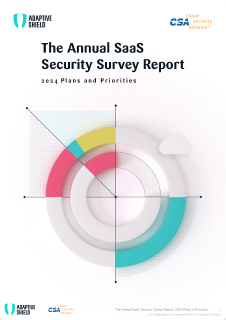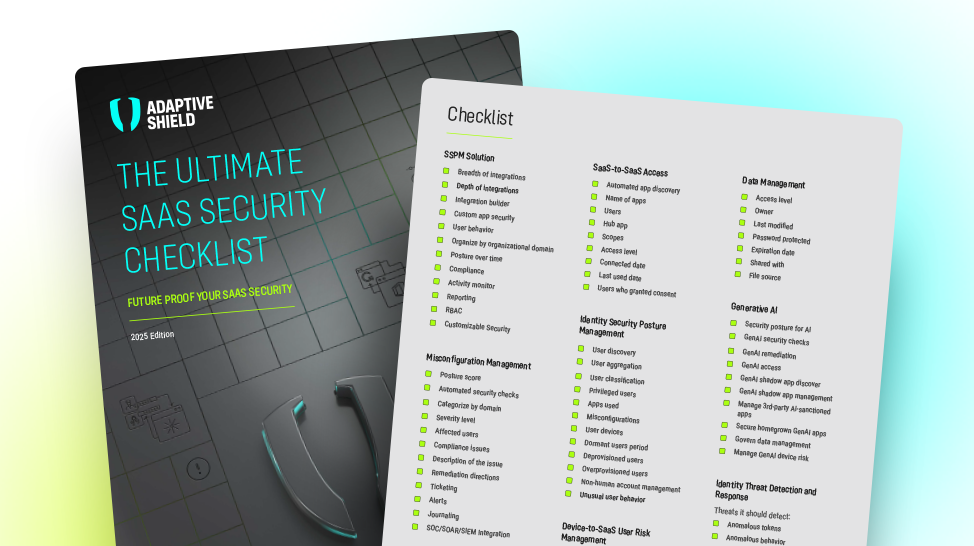Cloud threat management refers to the set of practices and technologies employed to safeguard cloud-based systems, SaaS applications, and data from security risks and vulnerabilities. It encompasses proactive measures such as risk assessment, identity and access management, encryption, and network security, as well as reactive measures like threat detection, incident response, and recovery planning. By implementing comprehensive security strategies and continuously monitoring the cloud environment, organizations can mitigate the potential impact of cyber threats and ensure the confidentiality, integrity, and availability of their cloud-based assets.
Understanding Threats and Risks
Organizations face various types of cloud security threats that can compromise the confidentiality, integrity, and availability of their cloud-based systems, applications, and data. Some common cloud security threats include:
Data Breaches:
Unauthorized access or disclosure of sensitive data stored in the cloud can lead to data breaches. This can occur due to weak access controls, insecure APIs, or misconfigurations.
Account Hijacking:
Attackers may gain unauthorized access to user accounts or administrative privileges in the cloud environment. This can occur through phishing attacks, weak passwords, or stolen credentials, allowing attackers to manipulate or steal data.
Insider Threats:
Malicious insiders or employees with elevated privileges can intentionally misuse their access to steal, manipulate, or leak sensitive data or compromise the cloud SaaS apps or cloud assets.
Data Loss:
Data stored in the cloud can be permanently lost due to accidental deletion, hardware failures, software bugs, or inadequate backup and recovery procedures.
Misconfiguration:
Improperly configured cloud resources can introduce security vulnerabilities, leaving sensitive data or services exposed to unauthorized access.
Malware and Ransomware:
Cloud environments can be targeted by malware or ransomware, which can infect systems, encrypt data, and demand ransom for its release.
Compliance and Legal Risks:
Storing data in the cloud may subject organizations to compliance requirements and legal risks, especially if data privacy regulations or industry-specific standards are violated.
To mitigate these threats, organizations must implement robust security measures such as encryption, strong access controls, regular vulnerability assessments, monitoring and detection systems, and employee awareness and training programs.
The Threat Management Process
Risk Identification and Assessment
Cloud threat management encompasses risk identification and assessment as a crucial component of securing cloud-based systems, SaaS applications, and data. Risk identification involves identifying potential threats and vulnerabilities specific to the cloud environment. This includes assessing the security controls provided by the Cloud Service Provider (CSP), evaluating the organization’s unique requirements and risk tolerance, and considering industry-specific compliance and regulatory standards. Risk assessment involves quantifying and prioritizing identified risks based on their potential impact and likelihood of occurrence. It entails conducting vulnerability assessments, penetration testing, and analyzing historical data or threat intelligence to determine the severity of risks. By systematically identifying and assessing risks, organizations can prioritize security measures, allocate resources effectively, and make informed decisions to mitigate the identified threats in their cloud environment.
Threat Prevention and Mitigation
Cloud threat management involves the implementation of various security controls and measures to prevent and mitigate threats in cloud environments. These measures aim to safeguard cloud-based systems, applications, and data from unauthorized access, data breaches, and other malicious activities. Examples of security controls include robust identity and access management (IAM) practices, such as strong password policies, multi-factor authentication, and role-based access controls. Encryption techniques are utilized to protect data both at rest and in transit. Network security measures, such as firewalls, intrusion detection and prevention systems, and virtual private networks (VPNs), help defend against external attacks. Regular patching and updating of software and systems, as well as vulnerability scanning and penetration testing, are crucial for identifying and addressing potential weaknesses. Additionally, employee awareness and training programs play a significant role in promoting security-conscious behavior and minimizing human errors. By implementing a comprehensive set of security controls and measures, organizations can significantly reduce the risk of cloud-related threats and enhance the overall security posture of their cloud infrastructure.
Threat Detection and Monitoring
Implementing Security Monitoring Systems and Tools
Implementing security monitoring systems and tools is crucial for effective threat detection and monitoring. Organizations must deploy robust systems that continuously monitor their network, endpoints, and data to detect potential security threats and anomalies. By leveraging different technologies, organizations can proactively identify suspicious activities, unauthorized access attempts, malware infections, or other security breaches. Security monitoring enables swift incident response and mitigation, minimizing the impact of potential threats and ensuring the integrity and confidentiality of sensitive information. It allows organizations to stay one step ahead of cybercriminals and protect their digital assets, critical infrastructure, and reputation.
Conducting Regular Security Assessments and Audits
Conducting regular security assessments and audits is a vital aspect of threat detection and monitoring. These assessments involve comprehensive evaluations of an organization’s security infrastructure, policies, and procedures to identify vulnerabilities and weaknesses. By conducting thorough assessments and audits, organizations can proactively identify potential threats and gaps in their security posture. The continuous evaluation of security systems and practices helps organizations stay ahead of emerging threats, enhance their incident response capabilities, and maintain a robust and resilient security posture.
Essential Components of Threat Management
Effective threat management requires the implementation of various key components to ensure comprehensive protection against potential risks and vulnerabilities. The following components are essential in establishing a robust threat management strategy:
Configuration Management:
Properly configuring threat management systems is crucial. It involves setting up security tools and solutions with accurate and up-to-date configurations that align with best practices. This ensures that the systems are optimized to detect and respond to threats effectively.
Configuration and Permission Change Alerts:
Monitoring and receiving alerts on changes to configurations and permissions is vital. This component ensures that any modifications made to critical settings or user permissions are promptly detected and assessed for potential security implications. Timely alerts enable quick investigation and mitigation of unauthorized or suspicious activities, reducing the risk of data breaches or system compromises.
ITDR (Identity Threat Detection and Response):
ITDR involves the continuous monitoring and detection of User and Entity Behavior Analytics (UEBA) as well as potential threats. It includes leveraging advanced analytics and machine learning algorithms to detect anomalous behaviors, such as unusual user activities or abnormal network traffic patterns. Effective ITDR capabilities enable organizations to proactively identify and respond to potential threats, minimizing the impact of security incidents and ensuring a swift and efficient incident response process.
By integrating these essential components into their threat management strategy, organizations can significantly enhance their ability to detect, respond to, and mitigate potential risks and vulnerabilities. These components work together to provide a comprehensive approach to threat management, bolstering the overall security posture of the organization and safeguarding critical assets and sensitive data.



















